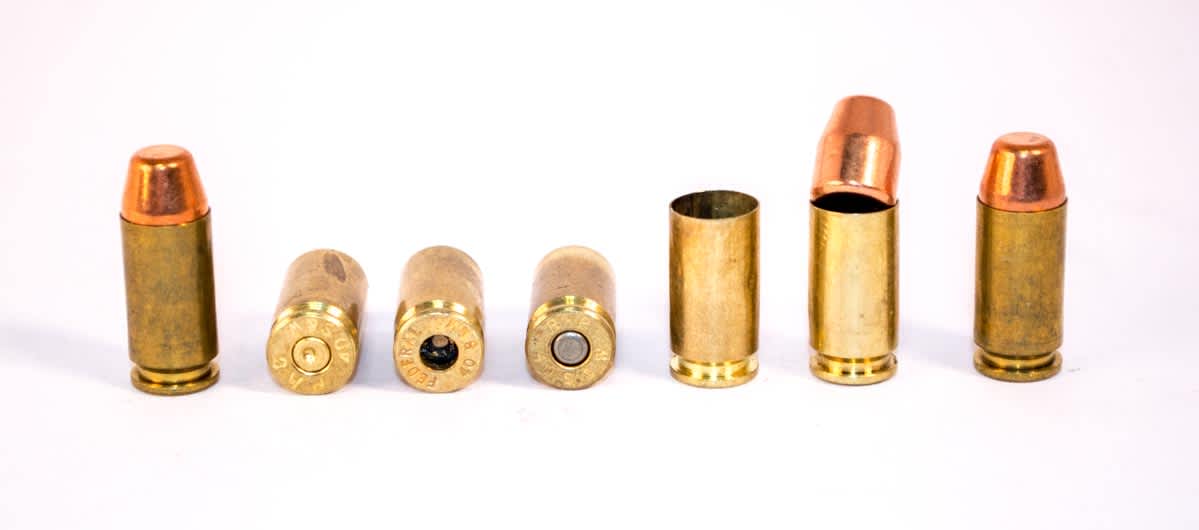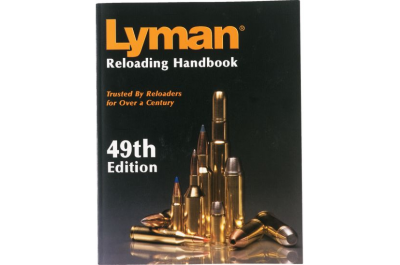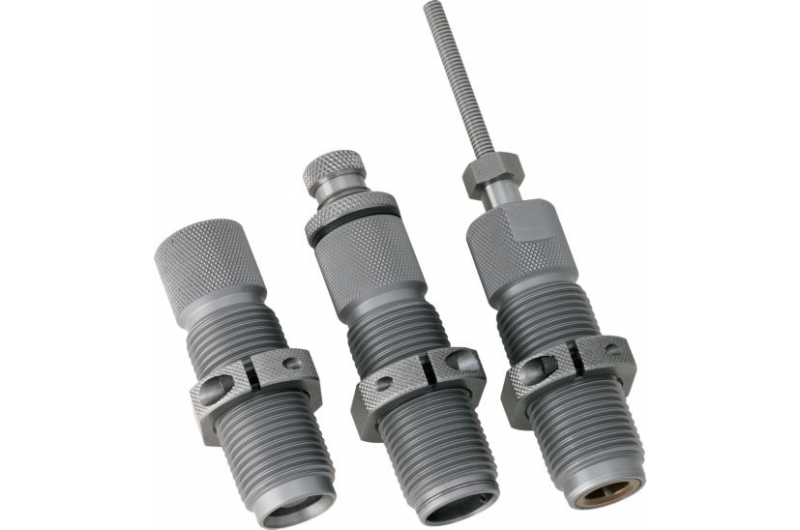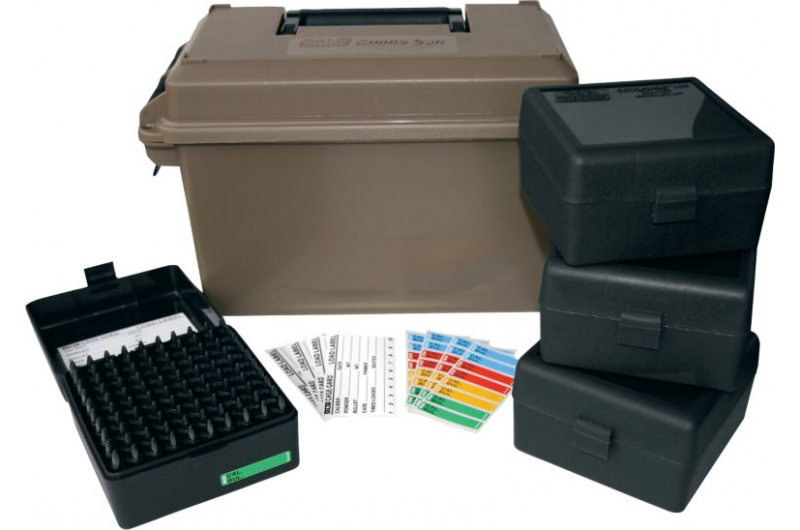How To Reload Handgun Cartridges
Tom McHale 05.26.16

A couple of months ago we talked about how to reload rifle cartridges. Reloading for pistol calibers, while similar, is even simpler. The core steps are basically the same:
- Clean and inspect the brass cartridge case.
- Remove the spent primer.
- Resize the case.
- Insert a new primer.
- Add in a new powder charge.
- Put a new bullet in place.
Just as with rifle cartridge reloading, you’re refilling the one reusable part – the brass case – with new stuff. The good part about pistol caliber reloading is that it’s even simpler than rifle reloading. Most rifle calibers operate at huge pressure levels and use bottleneck-shape cases. As a result, the cases tend to stretch a bit when you fire and resize them, so you need to trim them back to size. That’s an extra step that is rarely necessary with typical straight-wall pistol calibers like 9mm, .40 S&W, and .45 ACP.

So how do you get started? Step one is to get an official reloading manual. A great example is the Lyman 49th Edition Reloading Guide. It not only walks you through the process of how to safely reload ammunition, but it also provides the “recipes” for the precise amounts and types of powder for each caliber and bullet type. Since you’re dealing with high pressures and extremely fast burning substances, it’s critically important to follow published load recipes exactly. Never, ever stray outside of official data. Doing so risks blowing up your gun and causing injury or death to the shooter and those nearby.
Next, you’re going to need a way to clean the spent cartridge cases. Whether you pick them up from nearby shooters or save your own, they tend to get dirty not only from hitting the ground but from burnt powder residue. In my opinion, the easiest way to clean brass when you’re just getting started reloading is to use a dry tumbler like this Cabela’s Model 400 Vibratory Case Tumbler Kit.

The process couldn’t be easier. Just dump several hundred dirty cases in the bowl filled with crushed walnut shells or corn cob bits, cover it up, and let it run for a couple of hours. The vibration scrubs the dirt and grime from your cases. When you sift them from the cleaning media, they’ll look almost like new. Cleaning is important not just for cosmetic reasons. You don’t want to be running gritty cases through your reloading gear nor do you want to load filthy reloaded ammo into your gun.

For the remaining steps, you’ll need a reloading press. Think of this as a tool that helps you mash things together – in this case the new primers, cases, and bullets. Using special inserts called “dies” you’ll use the press for the following functions:
Resizing the case and removing the spent primer. Usually, the resizing die also has a pin that pokes out the old primer in the process. Think of a resizing die as an inverse, three-dimensional mirror image of proper size cartridge case. When a cartridge is fired, the case expands in the chamber, so it’s no longer the size and shape that it was before firing. When you force a fired case into a resizing die, the walls of the die press the case exterior back into position.
Pressing a new primer into the primer pocket. The press, or sometimes a separate hand tool like this RCBS Universal Priming Tool, gently press a new primer into the primer pocket.

Expanding the case mouth. This step opens the mouth of the case just enough to allow you to begin the process of inserting a new bullet. This step also uses a case mouth expander die. Its purpose is to expand the case mouth just barely enough to allow the base of the new bullet to fit into case without shaving off lead or copper.
Inserting a new bullet. Called the seating step, the die is adjusted to push the bullet down into the case to just the right depth. Pistol cartridges have to end up at a specific overall length not only to fit inside magazines but to ensure that there is not too much or too little pressure.
Crimping the case around the new bullet. While crimping is an entire topic all on its own, for now, think of crimping as removing the expansion of the case mouth created by the case mouth expander die. Technically, crimping is not what holds the bullet in place – that would be friction between the interior neck of a cartridge case and the bullet surface. However, some rimmed revolver cartridges rely on roll crimping to aid case neck tension.
All of these steps use a reloading press. For beginning reloaders, I always recommend starting with a single stage press. Models like this Hornady Lock-n-Load Classic perform one step at a time on a cartridge case so it’s a great and safe way to learn the ropes. As you’re only doing one step at a time it’s very forgiving and will help you understand the principles of each stage in the process.

As you progress, you can upgrade to a progressive reloading press like the Hornady Lock-n-Load Auto Progressive Press. This unit holds five cases and can perform five operations at a time. The benefit is simple – you can reload a lot more ammunition a lot faster. Each time you pull the handle of a progressive reloading press, you complete a new round of ammunition.
Once you select your press, you’ll need a set of reloading dies for each caliber you want to reload. For most pistol calibers, you’ll buy a three-die set like these Hornady Custom Grade Pistol Dies. The first die resizes a spent case and knocks out the spent primer. The second expands the case mouth prior to seating a new bullet. The third combines the bullet seating and crimping steps. You can perform both of those at once if you adjust the die just right, or you can do batches where you seat your bullets first, then readjust the die for crimping and run your cartridges through again.

The last step is arguably the most important – final inspection. While I recommend inspections throughout the process, the last one is most important because the next stop for your new ammo is your gun. I like to combine this step with packaging as I have to handle each new cartridge for that anyway. I use boxes like these Cabela’s 100-round cartridge containers to package my homemade ammunition. As I place each fresh cartridge in a storage container, I look at the overall length to make sure that’s correct. I also check the primer to make sure that there is one in place and that it didn’t get inserted upside down.

If you want to stock up your supply for upcoming competitions or some future apocalypse, consider using something like the MTM Ammunition can combo. Not only do these kits contain cartridge boxes to safely store your new ammunition, but the ammo boxes are also designed to fit snugly into larger water-resistant containers that are great for travel and long-term storage.
Clearly, there’s a lot more to reloading than we can cover in a single article, but that’s where the first item mentioned here comes into play. If you’re considering getting into reloading, spend the twenty bucks on a good reloading manual. It’ll go into each step of the reloading process in far more detail. More importantly, it’ll teach you how to be safe and successful.
This story was produced in cooperation with Cabela’s.

